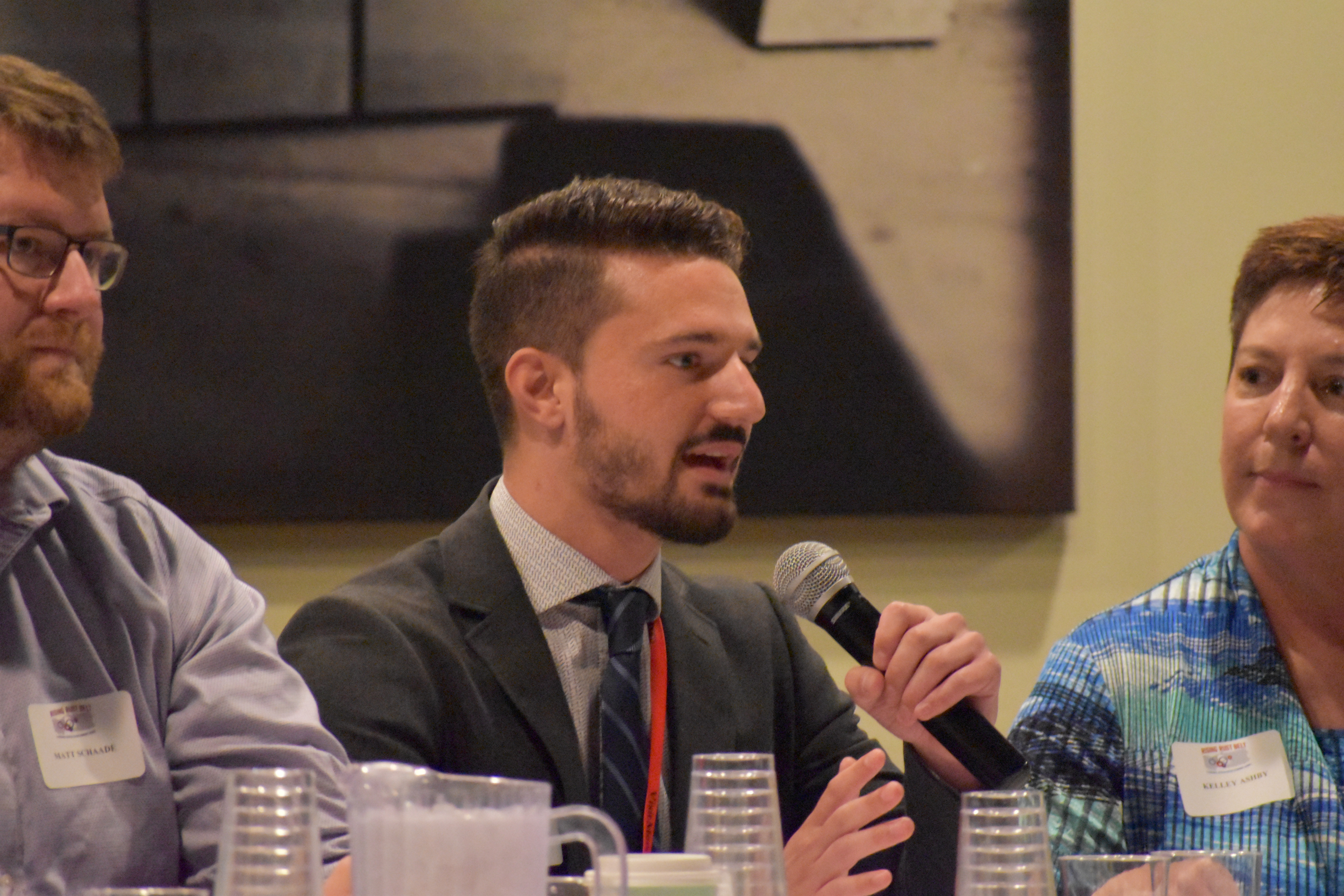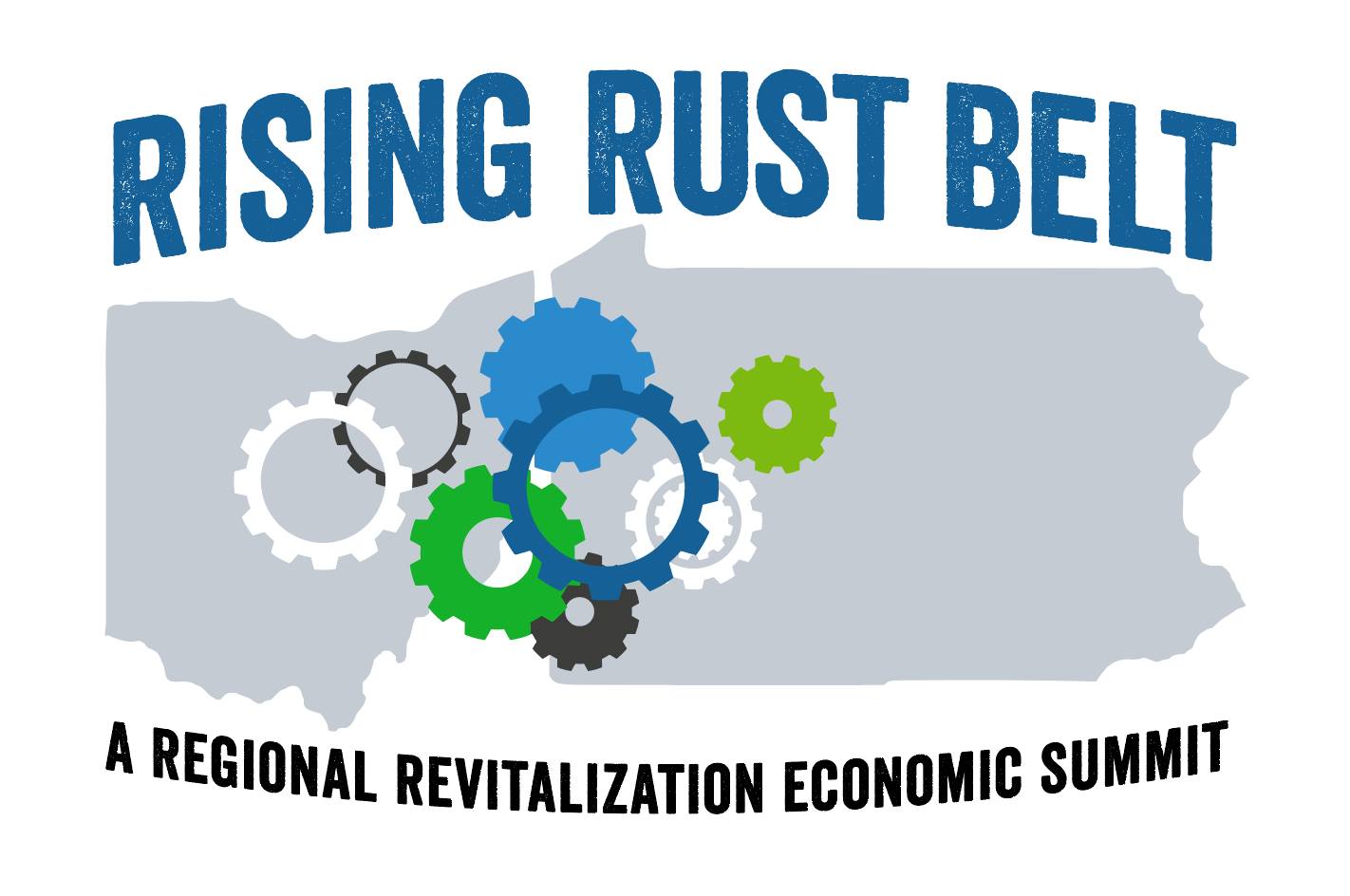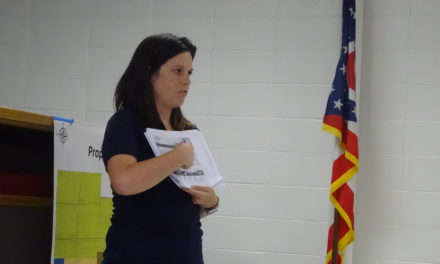
Shea Macmillan
Editor’s note: This is the third in a series of stories derived from Rising Rust Belt: A Regional Revitalization Economic Summit, which was held Oct. 7 and presented by the Shenango Valley, Youngstown-Warren and Lawrence County chambers of commerce.
One of the problems of living in a Rust Belt community has been the exodus of young people, those who go to college and never come back or those who don’t go to college but find better career opportunities elsewhere.
The organizers of Rising Rust Belt: A Regional Revitalization Economic Summit invited a panel of young people, some of whom are from the area and some who aren’t, to talk about how to attract the next generation of workers and community leaders.
Matt Schaade, who is with Mercy Health-Boardman and the Mahoning Valley Young Professional Group, said he has lived in large cities and small towns in Indiana, where he is from, Maryland, Texas and Kentucky. One aspect of life in common in all those areas was how the locals trash where they live, he said. It’s not hard to see why young people want to escape.
 “The first thing I wanted to do after high school was move far, far away,” said Laura Glenn, who grew up in New Castle and is director of planning and development at Human Services Center, New Castle. “Growing up in this community, I didn’t realize all that I had access to.”
“The first thing I wanted to do after high school was move far, far away,” said Laura Glenn, who grew up in New Castle and is director of planning and development at Human Services Center, New Castle. “Growing up in this community, I didn’t realize all that I had access to.”
The area has a low cost of living, recreation opportunities, developing downtown areas, ease of commuting and access to Cleveland, Pittsburgh and Akron, panelists said.
Beyond that, community leaders need to expose to people at an early age what they can do in the community and how they can make a difference, Glenn said.
Riley Atterholt, who grew up in West Middlesex, said he was able to meet people and learn about the community when he was young. That led to him committing to this community, said the development manager of JCL Energy, Sharon, and co-founder of Thrive Shenango Valley.
For young people to live in an area, they have to be able to make a living. The onus is on employers to make young people feel welcome and valued, panelists said.
Employers must realize that their employees are not married to their jobs, said Glenn, a single mom of two. They have to create a culture of engagement and communication, promote a work-life balance, encourage employees to be active, be clear on expectations, engage employees individually and allow for social activities outside of work, panelists said.
 Employees must be allowed to follow their interests within the job, and have their thoughts be a part of the decision-making process, said Shea MacMillan, manager of business development for the Youngstown-Warren chamber.
Employees must be allowed to follow their interests within the job, and have their thoughts be a part of the decision-making process, said Shea MacMillan, manager of business development for the Youngstown-Warren chamber.
“That really makes you feel a part of something,” MacMillan said.
Glenn said she has a mentor within her organization, and that goes a long way to making her feel a part of the organization.
“I think it’s important that the generations speak to each other respectfully,” she said.
Employers must share with their employees why they make decisions and how they make them, Atterholt said.
“People don’t care what you do until they know why you do it,” he said. “I like to think we care about what we do.”








